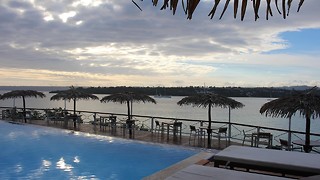Music: CUMS Symphony Orchestra play Shostakovich and Prokofiev
Alice Rudge is thoroughly satisfied by the elegance and drama provided by CUMS Symphony Orchestra at West Road Concert Hall

A difficult programme of Russian repertoire meant that high standards were demanded from the orchestra. These were met for the most part, with massed orchestral forces, including an extra brass section in the wings, rising to the challenge.
The first item on the programme was Prokofiev’s Violin Concerto No. 1 in D major – a highly lyrical work with lots of virtuosic technical details required of soloist Josie Robertson. The opening was suitably ethereal, with Robertson managing to play with both stillness and rich tone over the tremolo string accompaniment, which was masterfully controlled.
She coped with the delicate, filigree passages and tricky rhythmic intricacies admirably; however, often her playing seemed to lack real power, especially in the second movement where her spiccato playing and glissandi weren’t quite pulled off with the panache of a totally convincing performance. The third movement, though, provided her with an opportunity to thrill the audience with her very high yet warm and rich playing of delicate trills.
The highlight of the evening was to come in the next half, in the form of Shostakovich’s Symphony No. 7 in C major. An outpouring of patriotic Russian fervour, this piece was written during the first months of the siege of Leningrad by the Nazis. Requiring two brass sections and two conductors, as well as two harps and a piano added to the orchestra, there was a danger that the performance could have been slightly messy; the immaculate string pizzicatos and woodwind solos of the opening proved that this was not going to be the case.
The first movement’s very gradual build from a quiet snare drum rhythm to a noisy climax was skilfully controlled by conductor Martin Yates; the prolonged increase of tension created a wonderful sense of drama for the audience. A special mention must be given to Harry Ogg, the offstage conductor, and the offstage brass section, whose imitations of air raid sirens were extremely convincing!
The rest of the work variously saw a combination of sublime elegance and brash noise: the nature of the work was perfectly illustrated, alternating as it does between depicting an idyllic pastoral scene and chaotic moments from the war. The massed forces combined to create a thrilling climax at the end of the piece, which was greeted with the resounding applause of a satisfied audience.
 Lifestyle / It’s pretty fun to talk to strangers3 July 2025
Lifestyle / It’s pretty fun to talk to strangers3 July 2025 News / Academics lead campaign against Lord Browne Chancellor bid2 July 2025
News / Academics lead campaign against Lord Browne Chancellor bid2 July 2025 Science / It’s only rocket science, Elon3 July 2025
Science / It’s only rocket science, Elon3 July 2025 News / Clare students call on College to divest3 July 2025
News / Clare students call on College to divest3 July 2025 News / Arms divestment would be ‘existential’ threat to the University, says academic5 July 2025
News / Arms divestment would be ‘existential’ threat to the University, says academic5 July 2025








